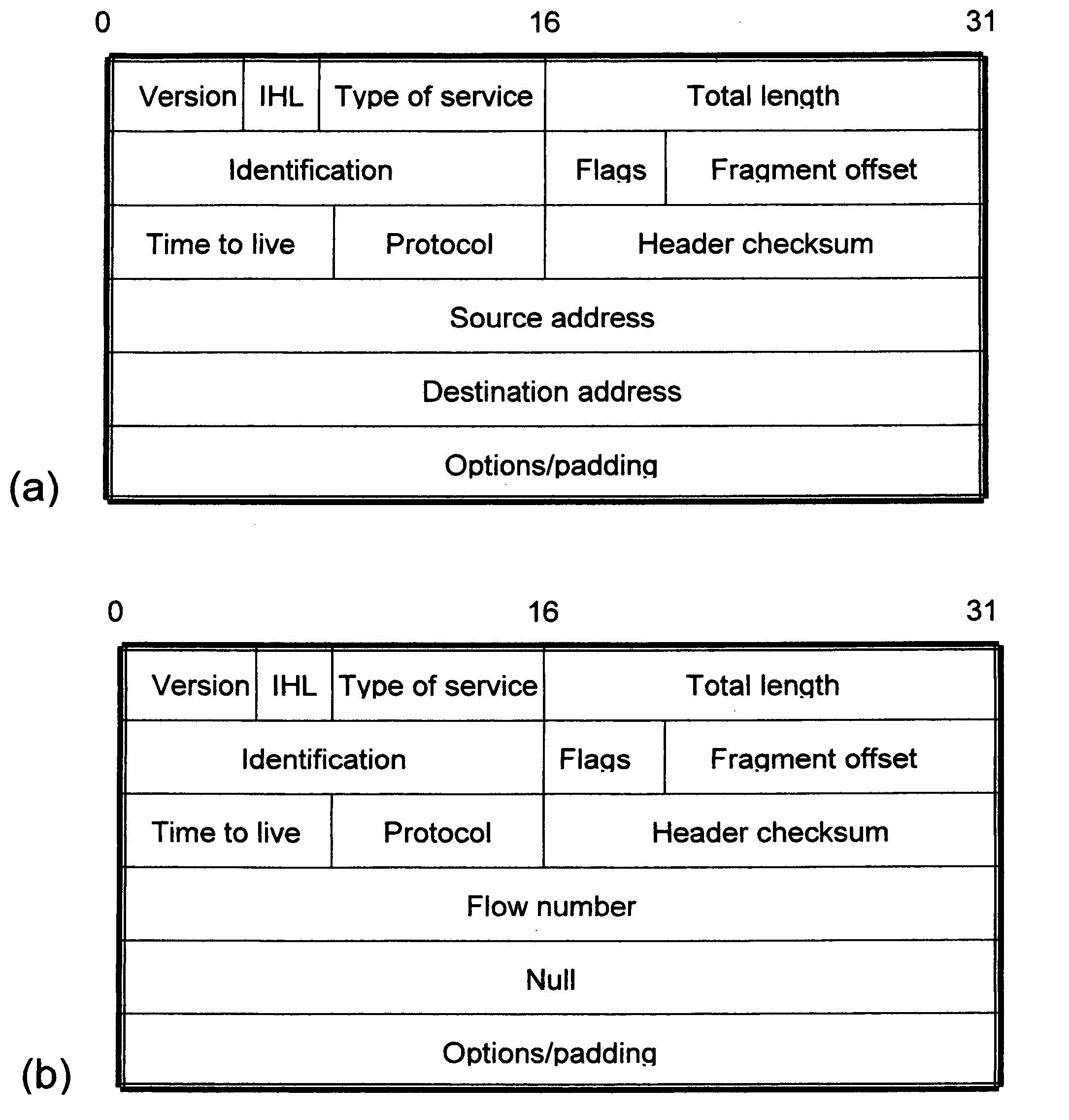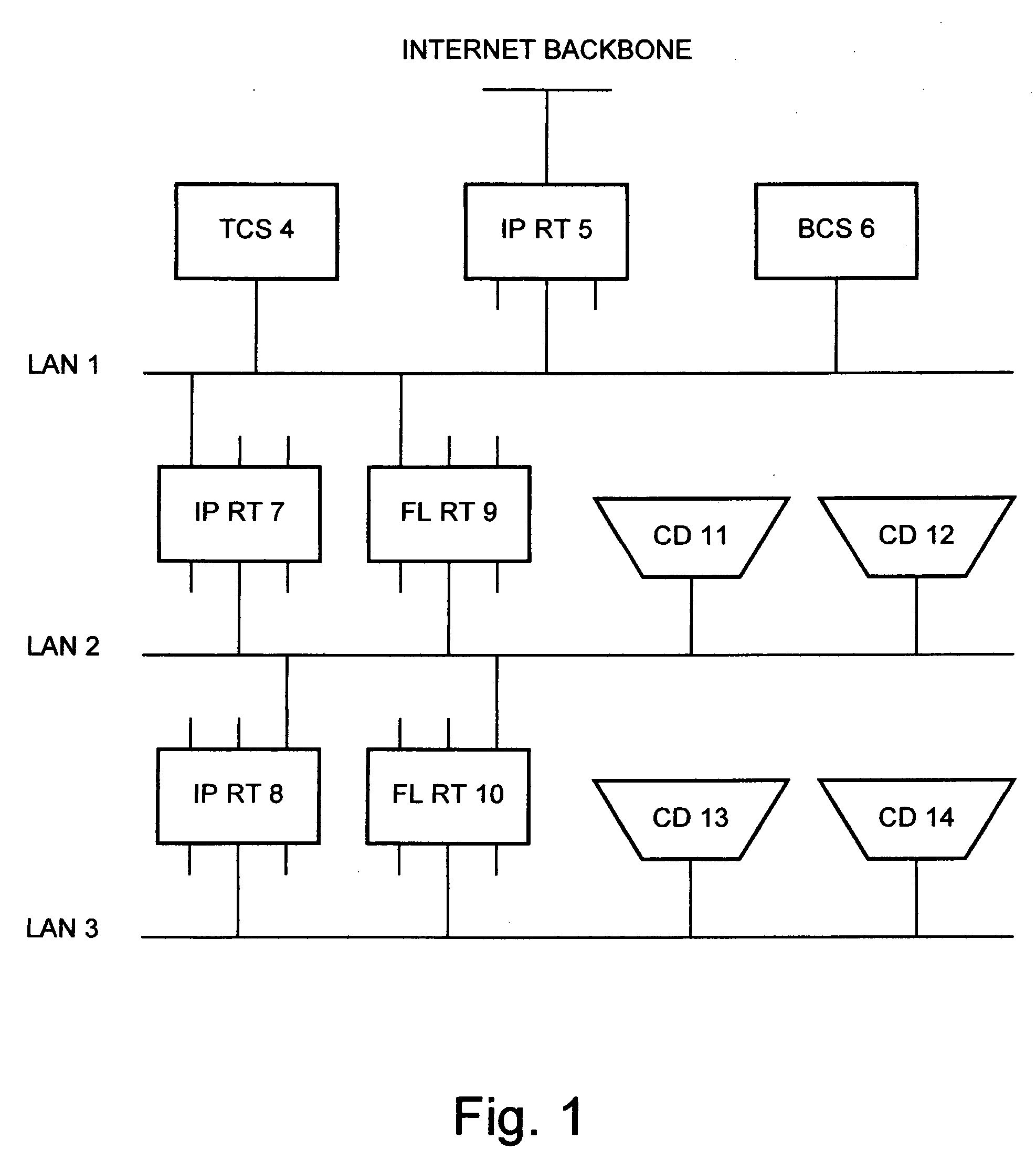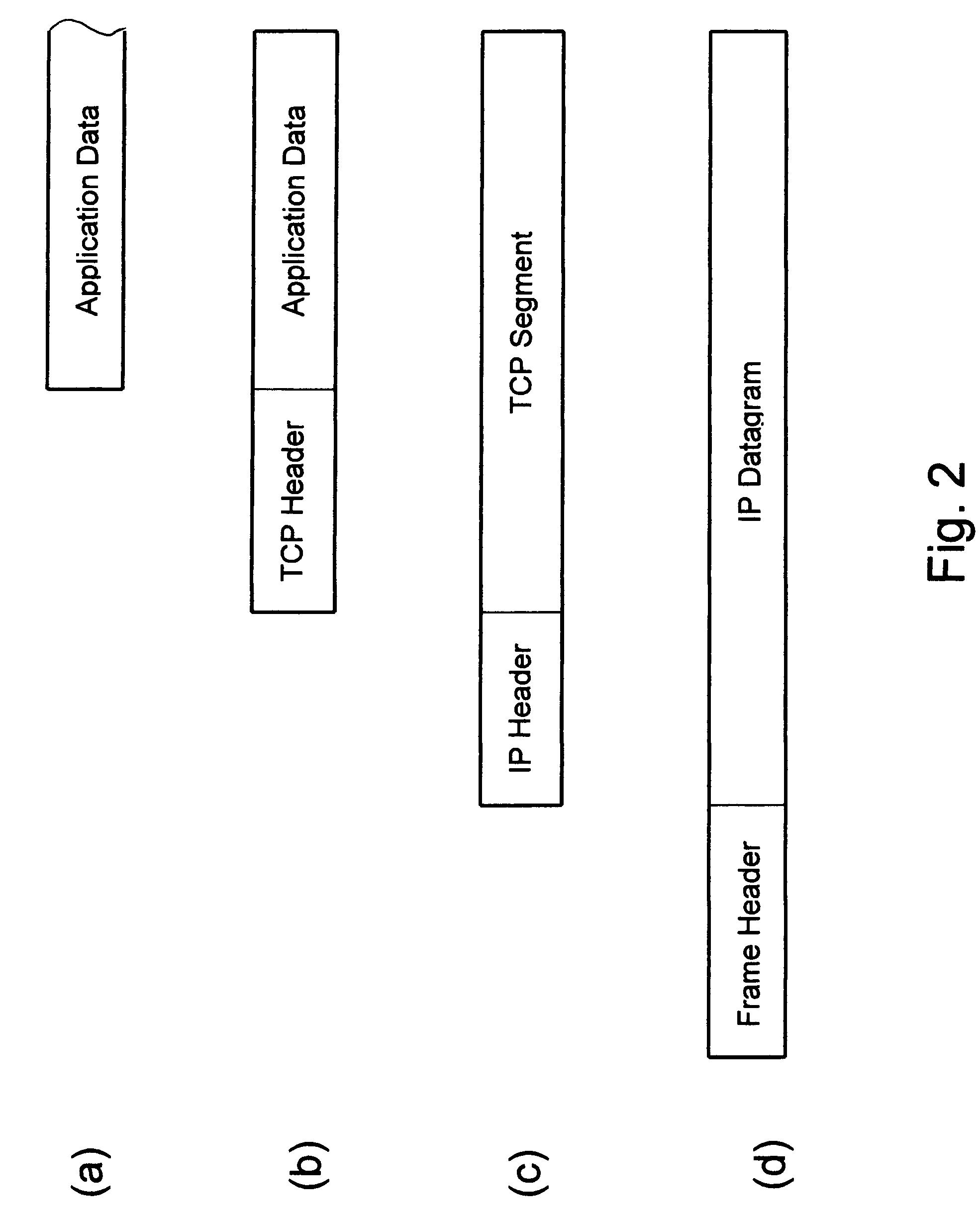Broadcasting over the internet
a technology of internet broadcasting and broadcasting, applied in the field of computer networks, can solve the problems of wasting bandwidth whenever high-demand content is transmitted, delay in content delivery, and more chance of content delay, and achieve the effect of reducing internet congestion and latency
- Summary
- Abstract
- Description
- Claims
- Application Information
AI Technical Summary
Benefits of technology
Problems solved by technology
Method used
Image
Examples
Embodiment Construction
[0027]The Internet comprises many regional systems connected by backbones and individually managed by large independent service providers. An autonomous regional system is both a management domain and routing domain: it may use interior routing protocols and maintain interior routing tables. A system for broadcasting over the Internet according to the present invention is illustrated by FIG. 1 that shows only three interconnected local area networks (LANs) 1-3 and a few client devices 11-14 in a singly administered domain while there could be hundreds of LANs and thousands of clients. Users of client devices, such as desktop or laptop computers, personal digital assistants and smart phones, submit requests for Internet content by typing or copying URL, which is the content identifier on the Internet, in the browser address bar or clicking on links. The requests are directed to a traffic control server 4 over “standard” IP routers 7 and 8. A single-client request is served in a usual...
PUM
 Login to View More
Login to View More Abstract
Description
Claims
Application Information
 Login to View More
Login to View More - R&D
- Intellectual Property
- Life Sciences
- Materials
- Tech Scout
- Unparalleled Data Quality
- Higher Quality Content
- 60% Fewer Hallucinations
Browse by: Latest US Patents, China's latest patents, Technical Efficacy Thesaurus, Application Domain, Technology Topic, Popular Technical Reports.
© 2025 PatSnap. All rights reserved.Legal|Privacy policy|Modern Slavery Act Transparency Statement|Sitemap|About US| Contact US: help@patsnap.com



